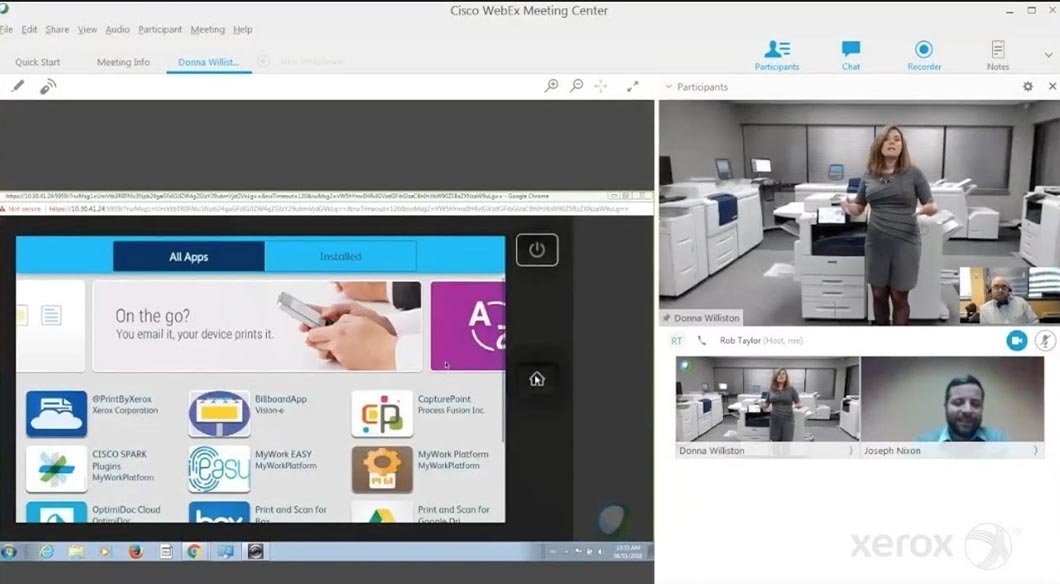In this “new normal,” sales teams have been forced to rely on virtual selling to close more deals.
But solely relying on virtual sales channels comes with a lot of challenges. Sales representatives must be equipped with technological tools to present product demos and impress customers. They also must learn to identify the needs of buyers via online chats.
To help you adjust to the new era of virtual selling, here are 7 winning virtual selling strategies.
1. Have the Right Tools and Software
To state the obvious, you’ll need the right tools and software to make virtual sales.
Video conferencing tools such as Zoom, Skype, and GoToMeeting are easily accessible tools for online calls. You also can consider sales customer relationship management (CRM) software such as Hubspot, Zoho CRM, and Freshworks to streamline your remote sales process in an all-in-one platform.
Make sure to have the right equipment as well. Use a headset to guarantee good sound quality when communicating with prospects.
The entire sales team must be equipped with a proper internet connection. Unfortunately, sales training company RAIN Group found 89% of buyers had experienced technical problems.
Poor internet connection can easily dissuade buyers, especially if it interrupts a product demo. It also could lead to a negative impression of your company.
As a result, equip sales team members with the right tools and software. If everyone is working from home, then subsidize their equipment. This is a small but necessary investment to ensure operations run smoothly.
2. Plan the Sales Process
Before the pandemic, you could schedule face-to-face meetings to impress potential prospects, partners or clients. To achieve the same effect with virtual selling, you need ample preparation and high-quality visuals.
According to sales training company Rain Group, 34% of buyers report that sellers are skilled at showcasing possibilities or problem-solving capabilities. Furthermore, 26% of buyers believe sellers are skilled at discovering their needs virtually.
In a remote sales environment, businesses must meticulously plan their sales process. Never make a call without a plan. You must be able to identify needs and segment prospects to get them from point A to point B of the buying process.
Professional services firm ZS Associates writes, “Best-in-class companies are far more likely than their industry average or laggard counterparts to have a formal, well communicated, and broadly adopted sales process.”
When sales teams engage in a video call, they must know how to communicate with prospects based on their stage in the sales funnel.
Here are some questions to consider:
- How do we communicate with clients at this stage?
- What do they need to know about our products and services?
- How do we close deals at this stage in the sales process?
Create a strategy and plan ahead to speed up the sales process. Along the way, your team may discover ways to tell your brand’s story and improve your virtual selling strategy.
3. Ask Questions
Whether you’re selling virtually or in-person, no one can close a deal just by talking about their product and service. Instead, you must make an attempt to know your customer and identify their needs by asking questions.
Why do they want to use your product? What are the features most relevant for them? Ask questions to pinpoint customer challenges, needs, issues and pain points.
The answers of customers will help you create a personalized pitch to reel them in.
As a result, train sales teams to routinely ask questions during the sales calls. Schedule a workshop or meeting and get sales representatives to list down insightful questions to ask based on each stage in the buyer’s journey. Then teach them how to take advantage of opportunities to upsell your products.
Consequently, they must also be prepared to answer inquiries that customers will ask. So, list down commonly asked questions and ensure sales representatives know the right answers.
You also can list down content such as whitepapers, blog posts, videos, or e-books designed to answer customer inquiries. This way, you can provide much-needed information and showcase your products in the best light.
4. Provide Educational Materials
According to the Content Marketing Institute, 51% of B2B marketers can prove their content marketing efforts have led to a rise in sales.
A Statista found business-to-business (B2B) marketers believe that blog posts, white papers and videos were the top three most valuable content types that could get leads across the sales funnel.
In the era of virtual selling, plenty of prospects rely on educational resources to make an informed decision about their purchase. They want to consume informative blog posts, case studies or videos that show how your product can address their needs — before or after getting in touch for a sales call.
Hence, marketing teams must collaborate with sales teams to create resources. Create blog posts to prove why your products are the solution to your prospect’s needs or to answer frequently asked questions. In-depth case studies can convince prospects to make purchasing decisions.
Jones PR provides a list of content types you can use to attract leads and convert them into the sales funnel.
High-quality content and downloadable resources will let customers know your products or services better. When sales reps send links to quality content, it raises the credibility and trustworthiness of your business.
5. Make Engaging Product Demonstrations
Quality presentations and product demonstrations matter a lot.
At the end of a call, you want people to think, “This sales team is very impressive. It’s a great thing I made time to meet them.”
Unfortunately, sales training company RAIN Group found more than 83% of buyers have met with unprepared sales teams and 86% endured a poor call with no visuals. Also, 16% of buyers believe sellers are effective at making the ROI case when selling virtually.
Much needs to be done to improve the virtual sales process. However, learning virtual presentation skills can enable sales teams to overcome remote selling challenges.
To get started, remind sales representatives to dress for success and find the best lighting. Building a good first impression begins by looking your best.
Next, find the right camera angle. Make it seem like you’re looking directly at your audience, even if you’re miles apart.
A good tip is to create a prerecorded product demo or use relevant background images.
If you’re in the B2B industry, create prerecorded product demos to ensure you cover all the points necessary.
For example, Xerox provides customers with a live-stream product demonstration that they can view from their own home.

Likewise, if you prefer a live demonstration, use product screenshots as visuals. Imitate a broadcast weather reporter and explain how the product works alongside your cool visuals.
6. Practice Time Management
They say early is on time and on time is late. The same thing is true during sales calls. Your prospects may have various appointments throughout the day so they need time to prepare for their upcoming Zoom meeting and office chats.
That’s why sales teams must make sales calls concise and straight to the point. Within the time limit, you must identify your customer’s needs and sell your product as fast as possible. No one wants to get stuck on a sales call a lot longer than necessary.
To avoid going into overtime, plan sales calls and make it a habit to end ahead of time. If a call is an hour-long, wrap it up and give a summary by the 50-minute mark. Likewise, prepare to end the call on the 25-minute mark for a 30-minute call.
People love it when a call ends earlier than expected. To get in the good grace of buyers, you can say something like, “I want to end the meeting 10 minutes earlier to give you ample time to prepare for your upcoming meetings or tasks, so I’d like to end this call with this last point.”
Furthermore, you can use this as an opportunity to answer last-minute questions from your prospects. With this strategy, you’ll be able to cover all the crucial points necessary and stay within the time limit.
7. Track Metrics
Just like everything else, monitor data and track metrics from your virtual sales activities.
Look at the results of each sales representative and keep tabs on the results of your entire organization. Review the numbers on a weekly or monthly basis and use them to identify points for improvement.
Here are some metrics to consider:
- Average revenue per new client
- Average close rate
- Average win rate
- Actual sales vs. sales goal
- Sales cycle length
- Sales closing percentage
If you want to be more precise, track the performance of sales emails in your pipeline, and A/B test landing pages. Look at the conversion rates of your campaigns and collaborate with marketing teams to improve results.
Time to Adjust Your Virtual Selling Strategy
Now that you’ve learned these effective virtual selling strategies, practice them in real-life.
Provide sales teams with the right tools and equipment, especially if they’re working from home. Meticulously plan the sales process and encourage salespeople to ask questions to create a persuasive pitch. Afterward, track metrics and monitor results regularly.
In the new normal, sales teams that can adapt quickly are bound to win.
How are you making the transition to virtual selling?











